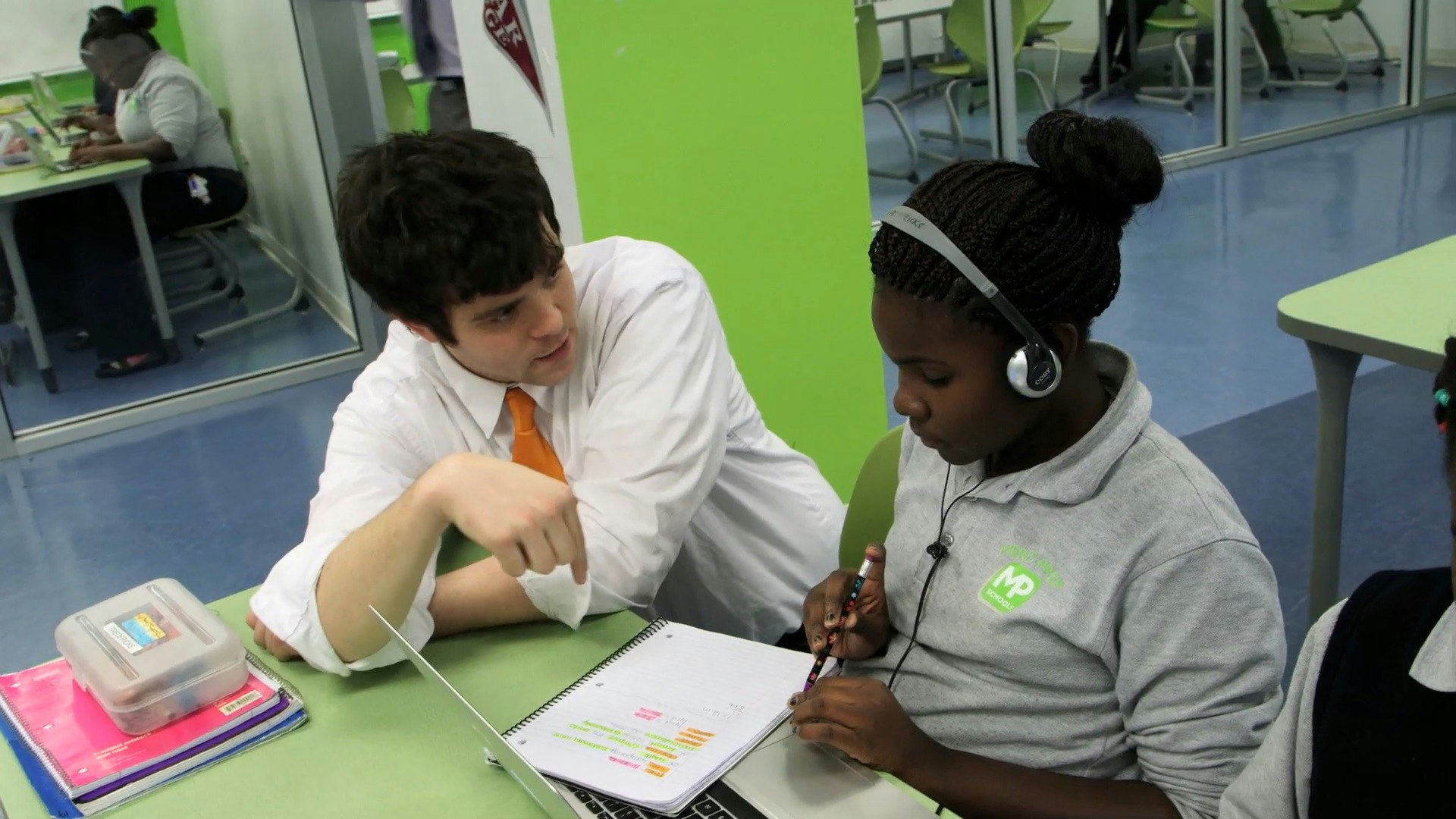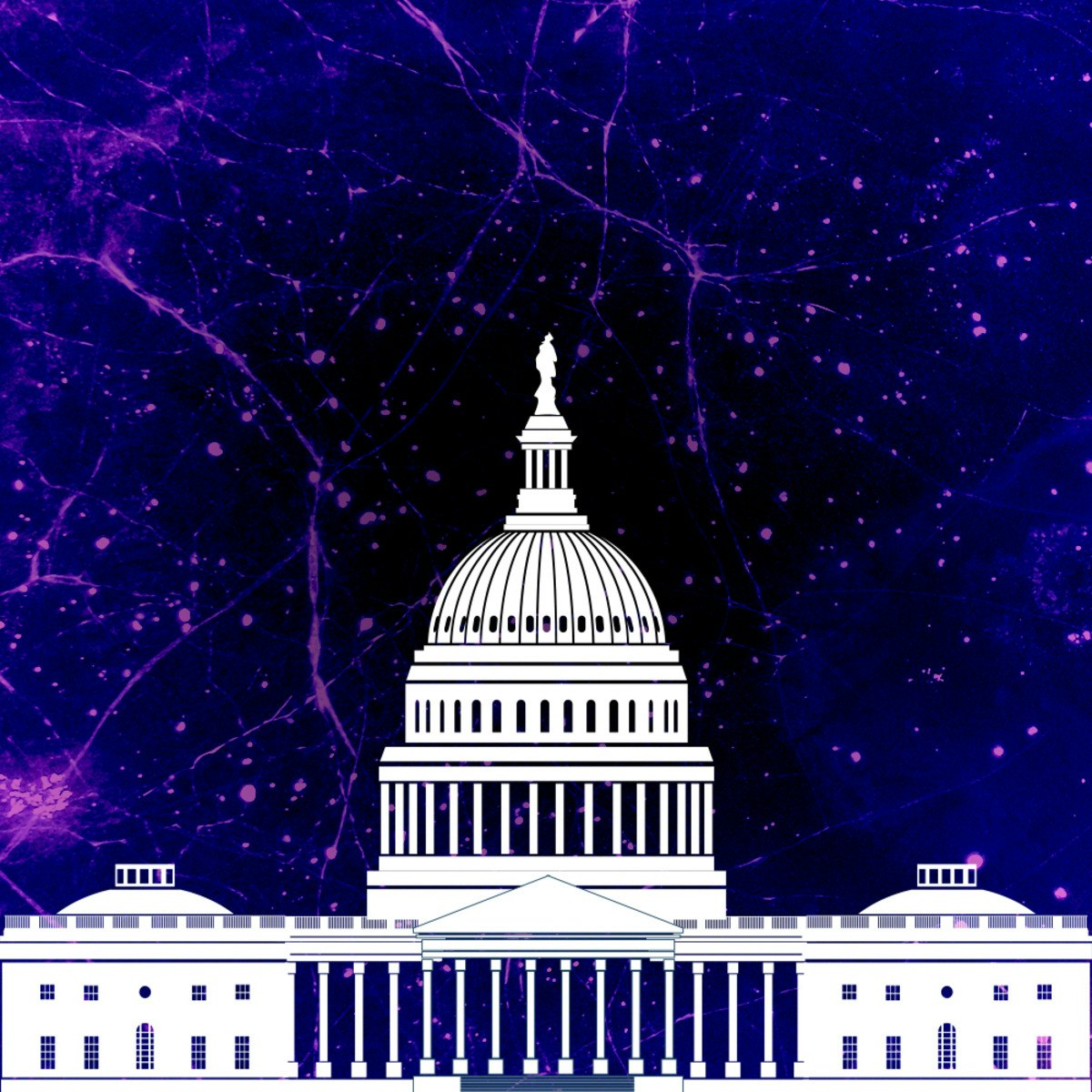Back to Courses









Social Sciences Courses - Page 23
Showing results 221-230 of 672

Blended Learning: Personalizing Education for Students
Plenty of buzz exists about blended learning and its transformational potential. But what does blended learning really mean? In this course we will explore the different models of blended learning and dive into key issues that impact students, teachers, and schools. Specifically, we will look at these issues through the lens of three high-performing schools that each use a different type of blended learning. A few of the key topics will include:
- The role of the student and how to support students in the transition from traditional to blended learning
- Implications for teachers in their day-to-day work and overall role
- Impact on the way schools are designed including staffing models, use of time, hardware/software selection, and the use of data
- Implementation challenges, potential solutions, and the remaining open questions
We will live by the attributes of blended learning in this course, encouraging students to take quizzes at the beginning of the module to assess their understanding and skip material they already know. Overall, we will take a hand-on approach and the course will culminate in participants prototyping their own blended learning model.
If you are interested in learning more about how to best leverage technology in education and rethink the way we run schools, join this MOOC and encourage your colleagues to do the same. Become a part of this growing movement and learn first-hand how blended learning can help provide students a more personalized learning experience.

Sustainable Neighborhoods
This course will provide students with an introduction to tools and concepts for a better understanding of the importance of the neighborhood as part of a sustainable city. This will include a careful look at the natural context of successful neighborhoods. An evaluation of important components and structure that create a sustainable neighborhood. Complete neighborhoods can provide their residents with pedestrian access to schools, daycare, recreational centers, and a variety of open spaces, as well as opportunities for food production. These and other aspects of sustainable neighborhoods will be carefully evaluated in this course. There will also be case studies of neighborhood development projects in Houston, TX, San Antonio, TX, and Chattanooga, TN. And lastly, the course will review the importance of zoning on sustainable neighborhoods with a particular focus on form-based zoning.
By the end of this course, you will be able to:
• Construct general plans for urban parks and natural corridors for achieving natural context neighborhoods.
• Analyze how neighborhood schools, support services and civic sites contribute to neighborhood livability and sustainability.
• Examine how local open space and housing density can be balanced as neighborhood components to achieve sustainable communities.
• Evaluate the aspects of neighborhood structure that include packet parks, open-space configurations, and transit orientation in communities.
• Apply lessons learned from the evaluation of three case studies at the Buffalo Bayou project in Houston, Texas, the Pearl District project in San Antonio Texas, and 21st century waterfront project in Chattanooga Tennessee.
• Explain the importance of zoning for sustainable neighborhoods with a particular focus on form-based zoning.
Example backgrounds that would be helpful for students to succeed in this course:
- To have a general understanding of how public/private projects are planned and implemented
- Have a strong interest or experience in planning and developing regional sustainable development plans
- Familiar with how government organizations function in the areas of transportation planning and project development
- Served as a volunteer committee member or leader on regional transportation projects and/or regional policy development initiatives
- Have a background and interest in environmental protection plans and projects
- A general knowledge of regional transportation project planning and implementation
- General knowledge or experience in public participation in governmental policy development
- A strong interest and/or experience in improving the urban environment for the benefit of its citizens
- Have a general knowledge of legal and policy issues involved in sustainable development
- Have experience or general knowledge of social equity issues
Model Thinking
We live in a complex world with diverse people, firms, and governments whose behaviors aggregate to produce novel, unexpected phenomena. We see political uprisings, market crashes, and a never ending array of social trends. How do we make sense of it? Models. Evidence shows that people who think with models consistently outperform those who don't. And, moreover people who think with lots of models outperform people who use only one. Why do models make us better thinkers? Models help us to better organize information - to make sense of that fire hose or hairball of data (choose your metaphor) available on the Internet. Models improve our abilities to make accurate forecasts. They help us make better decisions and adopt more effective strategies. They even can improve our ability to design institutions and procedures. In this class, I present a starter kit of models: I start with models of tipping points. I move on to cover models explain the wisdom of crowds, models that show why some countries are rich and some are poor, and models that help unpack the strategic decisions of firm and politicians.
The models covered in this class provide a foundation for future social science classes, whether they be in economics, political science, business, or sociology. Mastering this material will give you a huge leg up in advanced courses. They also help you in life. Here's how the course will work. For each model, I present a short, easily digestible overview lecture. Then, I'll dig deeper. I'll go into the technical details of the model. Those technical lectures won't require calculus but be prepared for some algebra. For all the lectures, I'll offer some questions and we'll have quizzes and even a final exam. If you decide to do the deep dive, and take all the quizzes and the exam, you'll receive a Course Certificate. If you just decide to follow along for the introductory lectures to gain some exposure that's fine too. It's all free. And it's all here to help make you a better thinker!

International Cyber Conflicts
By nature, cyber conflicts are an international issue that span across nation-state borders. By the end of the course, you will be able to apply the knowledge gained for analysis and management of international cyber incidents and conflicts including for activities such as development of policy related to cybercrime and cyberwarfare. Management of cyber incidents and conflicts requires an interdisciplinary perspective including an understanding of: 1) characteristics of the cyber threats and conflicts themselves, 2) international efforts to reduce and improve cyber security, and 3) psychological and sociopolitical factors.
The course is designed to reach an international audience and will encourage discussion on relevant current events among participants to enrich the experience with various personal and cultural perspectives on cutting-edge issues. In addition, assignments and other assessments will supplement video lectures and selected readings to ensure application of the material.
After taking this course you will be able to:
• Identify different types of actors involved in cyber threats (individuals, organizations & nation-states)
• Distinguish between different types of threats and issues in cyber security including, data theft, political espionage, critical infrastructure protection, and propaganda
• Detail the basic characteristics of the Internet infrastructure and international efforts to address Internet governance
• List several international efforts to address cyber crime and espionage
• Evaluate how principals that govern international conflicts might be applied in context of cyber security
• Apply different psychological theories of human motivation and cooperation and communication and political theories in analysis of different international issues related to cyber security including censorship, media operations and role of social technologies.
Grading:
Your grade is assessed based on discussion posts and quizzes. Individual taking this course for credit (i.e. students at the University at Albany y will be required to engage in additional activities communicated to them directly).
Recommended Background:
No background knowledge or skills are necessary, but an understanding and familiarity of cyber security, Internet infrastructure and international law would be advantageous for anyone who participates in the course.
ACKNOWLEDGEMENTS
Ersin Dincelli and Nic DePaula were the instructional designers for the course who assisted in the recording of the videos, reviewing material, creating slides, assessments and some of the content. Without their tremendous effort this would not have been possible. We also acknowledge the financial support for the recordings from the University at Albany as well as the support from Media and Marketing. Finally, thanks to Lisa Stephens who is the SUNY liaison to Coursera for being a strong supporter of the MOOC.

Teaching Texts and Forms
The first job of any writer is to get words down on paper, and teaching writing as process helps students gain the fluency, comfort and confidence they need to succeed at any writing task. But complex, comprehensive writing tasks often bring with them specific expectations and conventions the writer must address to be successful. This course will examine some of those more comprehensive writing tasks: personal essays; argument, analysis and other forms of transactional writing; and creative writing. Learners will also identify strategies for supporting the reading/writing connection and practical assignments for engaging students in writing around texts.

Introduction to Key Constitutional Concepts and Supreme Court Cases
This course offers an introduction to the U.S. Constitution and landmark Supreme Court cases interpreting it. It explores the Constitution’s origins, its amendment over the years, and methods of constitutional interpretation. Topics include the nature and structure of the federal government, the powers of the federal government, and individual rights.

The Factors that Influence the Effectiveness of Boards and the Governance Process
The third course in this Specialization introduces you to the factors that influence how effective boards of directors will be in carrying out their roles and responsibilities and hence the impact they have in shaping the success of the organization they govern. While this course has been developed with North American culture in mind, we do appreciate that, in other parts of the world, the nature of the factors that influence the effectiveness of nonprofit boards of directors may vary. Nevertheless,it is our hope that much of the course content will still be of value to those in other parts of the world.
To learn more about this course, please watch the overview video by copying and pasting the following link into your web browser: https://goo.gl/aAMIfl.
Keywords: Nonprofit; Nonprofit Sector; Voluntary Sector; Nonprofit Organizations, Non-Governmental Organizations, Volunteer Organizations, Leadership, Management, Governance, Board, Board of Directors, Performance, Effectiveness
Course 3 Overview:
Week 1: This week's questions: What factors influence the effectiveness of board meetings? What are the formal procedures and structures within the board that impact its performance? What can a board do to intentionally improve the way it structures itself and runs its decision making meetings?
Week 2: This week's questions: What do we mean by board composition and development and why is it important? Why is it difficult to change the composition of the board? How do you design the ideal mix of board members? How do you locate, recruit and develop board members?
Week 3: This week's questions: What do we mean by the "culture" of the board and why is it important? How do boards develop and pass along culture? Can board cultures be intentionally changed? What is the role of leadership in shaping board culture? What do effective nonprofit leaders involved in governance do? How can leadership be managed for higher performance?
Week 4: At this stage, you are asked to review the course content, submit a written assignment (known lightheartedly as a BEAR (Board Effectiveness Readiness Assessment), and take two multiple choice Readiness Assurance Tests (known similarly as RATs). One RAT will assess knowledge and reading comprehension and the other will test application of knowledge within a practical case.
Week 5: We will encourage you to discuss the RATs in the discussion forums and take them again should you wish to change any of your answers based on the information exchanged.

Advanced Trading Algorithms
This course will provide back test results for all the strategies in developed and emerging markets. The learner will also be taught scientific ways of back testing without succumbing to either look ahead (or) survival bias.
You will learn various methods of building a robust back testing system for the strategies discussed in the previous course. You will be taught how to differentiate between mere data mining and results based on solid empirical or theoretical foundation. Next, you will learn the ways and means of back testing the results and subjecting the back test results to stress tests. After which, you will learn the various ways in which transaction costs and other frictions could be incorporated in the back testing algorithm. Finally, you will learn techniques for measuring a strategies' performance and the concept of risk adjusted return. You will use some of the famous measures for risk adjusted returns such as Sharpe ratio, Treynor's Ratio and Jenson's Alpha. You will see how to pick an appropriate benchmark for a proposed fund.

Poverty & Population: How Demographics Shape Policy
This course has four modules, or foci. The first is to understand the categories of social welfare—populations, income, earnings, and assets— and some related concepts that play a very large role in shaping policy decisions: unemployment, inflation, and the minimum wage. The second deals with the central institution of social welfare—the labor market, which largely determines how many resources a person has. The labor market also establishes hierarchy, both through meritocracy and through categories of privilege. The third is poverty: the differing ways we define who is poor, and how effective U.S. anti-poverty efforts have been. The final module looks directly at federal decision making, the political organization of ideas, the structure of U.S. government, and the legislative process that shapes much of our social policy. This course addresses issues of power, oppression, and white supremacy.
The course is part of a sequence in social policy that has an HONORS TRACK. This track will prepare the learner for masters-level work in policy, which involves reading the literature, writing concise summaries and probing critiques. Over the sequence the learner will develop a policy analysis that will create a foundation for professional policy analyst assignments.

Teaching Impacts of Technology: Fundamentals
In this course you’ll focus on the fundamentals of teaching the impacts of technology, starting by exploring how you interact with and benefit from technology in a typical 24 hour period, such as the desire for instant food and entertainment. This will be done through a series of paired teaching sections, exploring a specific “Impact of Computing” in your typical day and the “Technologies and Computing Concepts” that enable that impact, all at a K12-appropriate level.
This course is part of a larger Specialization through which you’ll learn impacts of computing concepts you need to know, organized into 5 distinct digital "worlds”, as well as learn pedagogical techniques and evaluate lesson plans and resources to utilize in your classroom. By the end, you’ll be prepared to teach pre-college learners to be both savvy and effective participants in their digital world.
In this particular digital world (daily life), you’ll explore the following Impacts & Technology pairs --
Impacts (Food Delivery): Apps that bring you food, drivers, and find and recommend businesses
Technologies and Computing Concepts: Geolocation, Push Notifications, Near Field Communications, HMTL5, GPS, Graph representations, Minimal Spanning Trees, Shortest Path Algorithms
Impacts (Entertainment): Streaming for entertainment and education, Environmental impact of Internet, YouTube culture
Technologies and Computing Concepts: Data Centers, Downloading vs Streaming, Digital vs. Analog image representation, basic compression algorithms, Internet metrics (latency, bandwidth)
In the pedagogy section for this course, in which best practices for teaching computing concepts are explored, you’ll learn to employ constructivist activities useful in teaching impacts of computing and to evaluate and contribute to an unplugged lesson plan.
In terms of CSTA K-12 computer science standards, we’ll primarily cover learning objectives within the “impacts of computing” concept, while also including some within the “networks and the Internet” concepts and the “data and analysis” concept. Practices we cover include “fostering and inclusive computing culture”, “recognizing and defining computational problems”, and “communicating about computing”.
Popular Internships and Jobs by Categories
Browse
© 2024 BoostGrad | All rights reserved


